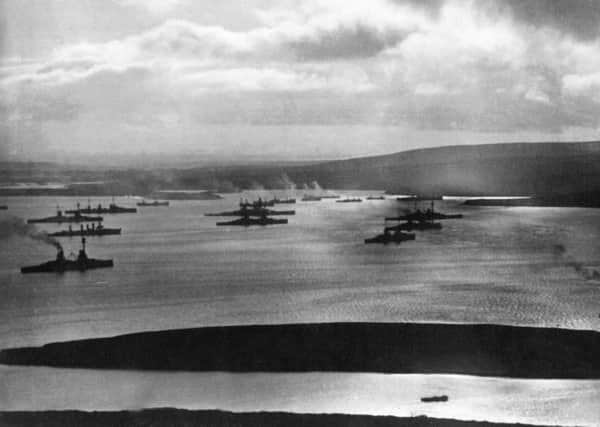Book tells how Orkney pupils witnessed scuttling of German fleet


Now, a century on from the scuttling of the German High Seas Fleet in Orkney at the end of World War One, a new book has revealed how schoolchildren across the archipelago were unlikely witnesses to the extraordinary act of self destruction.
Those who watched as one of the war’s most astonishing flashpoints unfolded included pupils on an organised school sailing trip, some of whom thought the destruction could well have been a show that had been laid on for their entertainment.
Advertisement
Hide AdAdvertisement
Hide AdThe children’s surprise experience began on the morning of 21 June, 1919, when they boarded the Flying Kestrel, a supply tug, for a tour of the interned German fleet in Scapa Flow.
On board were around 200 children from Stromness Academy, who had marched down to the pier in their classes for what they hoped would be a memorable expedition.
The headmaster, Colonel Hepburn, had even set a competition which tasked the pupils with recognising and recording as many of the German ship names as possible.
Little did the school party realise the outing was about to become considerably more exciting.
At the same time, as diplomatic talks in Paris continued to officially bring the war to an end, Admiral Ludwig von Reuter, the German commander of the fleet, feared his warships were about to be seized and divided up among the Allies.
His flagship, Emden, issued a coded message which ordered the crews anchored across Scapa Flow to scuttle their ships.
As battleships followed cruisers into the depths, leaving German sailors stranded in the sea or clinging to rafts, some children watching on from the Flying Kestrel burst into tears. Others, however, watched with glee at a spectacle that seemed to belong in a matinee show.
Peggy Gibson, one of the school party, recalled: “I remember feeling absolutely amazed that I was there and seeing something that seemed like a display staged for me. I could hardly believe my eyes.
Advertisement
Hide AdAdvertisement
Hide AdWinnie Thorpe, then just nine, remembered crying at the carnage around her, only to be consoled by her older brother, Leslie, who put an arm around her and observed: “Never mind, Winnie. We are witnessing history.”
Eventually, the Flying Kestrel’s shocked crew and passengers zig-zagged their way back through the turbulent waters, arriving back at Stromness by mid-afternoon. The pier, many recall, was crowded with anxious parents.
Gibson said: “There was great distress in the town. My parents knew I was out there with my three sisters and every pier in Stromness was lined with people wondering if the boat with the bairns in would come back.”
The account is one of several compiled in The Great Scuttle: The End Of The German High Seas Fleet, which chronicles the events of the day through interviews, diaries and records of its eyewitnesses.
Its author, David Meara, is well placed to document the scuttling. Both his mother and uncle were among the Stromness children on board the Flying Kestrel.
He said: “One hundred years on, there are no witnesses to the scuttling still alive. But, through the memories and records they left behind, the drama, chaos and error of that fateful day can be recreated for later generations for whom the scuttling of the German High Seas Fleet is simply part of distant history.”
The book also notes how the scuttling of the fleet caused Orcadians to drop whatever they were doing and look out to sea.
Kenneth Flett from Mussaquay was attending a funeral in Orphir kirkyard when a whisper went around the mourners as the minister had his eyes closed in the middle of the committal. When he opened them, the graveside was deserted.